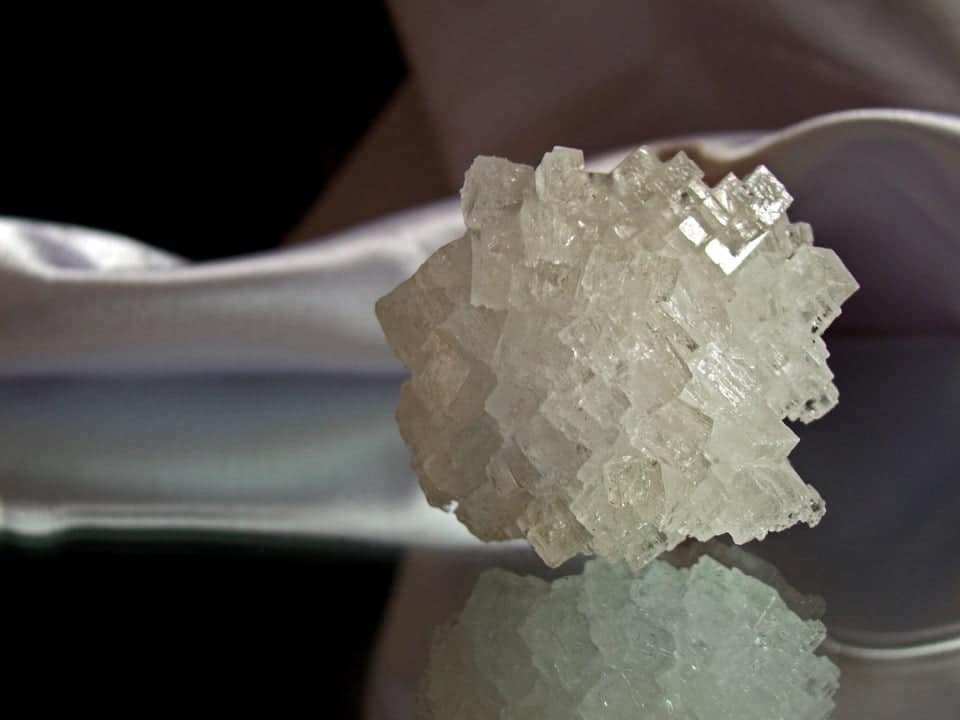Potassium iodide and iodine are often confused with each other or used interchangeably because of a similar component: iodine. Iodine is the element found on the periodic chart. However, the molecular form, which consists of two atoms of iodine stuck together, is not found in nature. Iodide is the salt, which could for example, be iodine combined with calcium or potassium, and can be found in seaweed sources and mineral deposits.
What is IODIDE?
Iodide is the ion form of iodine, occurring when iodine bonds with another element, such as potassium. Dietary iodine also occurs naturally as an iodide, such as potassium iodide or sodium iodide, (the kind typically placed into salt). According to Dr. David Brownstein, author of Iodine: Why You Need It, Why You Can’t Live Without It, iodide, as a salt, is not a very efficient way of getting iodine into the body. Brownstein referenced a study in which he stated that consuming milk and bread (with iodide in it) was a far superior way of getting iodine into the body, than iodide in salt.
Preventing Iodine Deficiency
In order to prevent iodine deficiency, we must find a way to get it into the body in a usable form. Iodine itself, as a molecule, is found mainly in alcohol bases because it doesn’t dissolve in water without sufficient iodide salt present, such as in Lugol’s solution. [Note: Lugol’s is made by adding potassium-iodide to water in large quantities, and then iodine can be added to this combination. This was discovered by Mr. Lugol in the 1800’s.]
In fact, during the 1800’s, pioneer farmers, who pushed farther and farther west away from the Eastern seacoast, soon learned that their cattle would not be healthy and reproduce without adding iodine from an independent source, because there was not sufficient iodine in the soil. Ranchers still do it today.
Current information regarding the nutritional facts about iodine can be found in the National Institute of Health Iodine Fact Sheet, online at https://ods.od.nih.gov/factsheets/Iodine-Consumer. Or you may access information for health professionals at https://ods.od.nih.gov/factsheets/Iodine-HealthProfessional.
Use by the Thyroid
The human thyroid has an iodine “trap” which captures iodides and holds them until they are converted into triiodothyronine (T3) and its prohormone, thyroxine (T4). T3s and T4s are shortened references to two very important hormones that are produced by the thyroid gland to regulate the body’s metabolism. This is only one of the uses of iodine in the body.
Now that you have learned the general differences between iodine and iodide, you will no longer be confused about potassium iodide and iodine. For more details on health benefits and usage information, or if you have any questions, comments, or concerns, feel free to contact the experts at Magnascent. We look forward to helping you understand the difference between iodine and iodide.
“Iodide is first oxidized either into nascent iodine I0 or I3-.The enzyme peroxidase is necessary as well as hydrogen peroxide. Then, iodine is attached to tyrosine which is the precursor of the thyroid hormones. Monoiodotyrosine and diiodotyrosine are formed by tyrosine iodinase.” [Ref 1.]
- Ref: Lecture 23 of Biology 100, University of Maryland, Baltimore County. Hormones of the thyroid and parathyroid gland, endocrine function of pancreas, Part 1 Thyroid Gland. Retrieved 2004.

